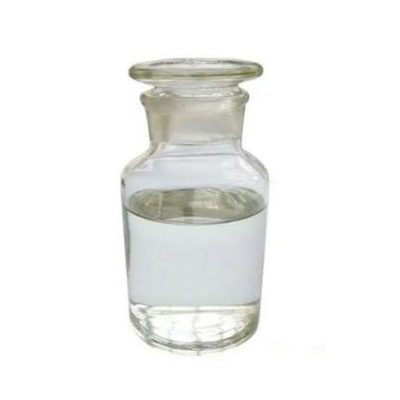- English
- Español
- Português
- русский
- Français
- 日本語
- Deutsch
- tiếng Việt
- Italiano
- Nederlands
- ภาษาไทย
- Polski
- 한국어
- Svenska
- magyar
- Malay
- বাংলা ভাষার
- Dansk
- Suomi
- हिन्दी
- Pilipino
- Türkçe
- Gaeilge
- العربية
- Indonesia
- Norsk
- تمل
- český
- ελληνικά
- український
- Javanese
- فارسی
- தமிழ்
- తెలుగు
- नेपाली
- Burmese
- български
- ລາວ
- Latine
- Қазақша
- Euskal
- Azərbaycan
- Slovenský jazyk
- Македонски
- Lietuvos
- Eesti Keel
- Română
- Slovenski
- मराठी
- Srpski језик
What are the Recent Advancements and Innovations in Gamma Valerolactone Technology?
2024-11-14

What are the advantages of Gamma Valerolactone?
Gamma Valerolactone Cas 108-29-2 is an environmentally friendly solvent that can be easily recovered and reused. It has a low vapor pressure, which reduces the risk of air pollution and health hazards. It is also a stable and non-reactive compound, making it safe for use in various applications. Its high boiling point and low melting point make it ideal for use in high-temperature reactions and energy storage devices.
What are the recent advancements and innovations in Gamma Valerolactone technology?
In recent years, researchers have been investigating various ways to improve the performance of Gamma Valerolactone Cas 108-29-2. One exciting development is its use as an electrolyte for lithium-ion batteries, which can significantly enhance their energy density. Other advancements include the synthesis of new derivatives of Gamma Valerolactone that exhibit unique properties, such as increased solubility and reactivity. Researchers are also exploring the potential of Gamma Valerolactone for the production of biopolymers and biofuels.
What are the potential applications of Gamma Valerolactone?
Gamma Valerolactone Cas 108-29-2 has a wide range of potential applications in various industries. It can be used as a solvent for the production of resins, plastics, and coatings. It has also been researched as a potential biofuel due to its high energy content and low toxicity. In the pharmaceutical industry, Gamma Valerolactone is used as a reaction solvent and a carrier for active ingredients. It is also a promising candidate for energy storage devices and as an electrolyte in lithium-ion batteries.
What is the future outlook for Gamma Valerolactone technology?
The field of Gamma Valerolactone technology is rapidly evolving, with new advancements and innovations appearing regularly. As researchers continue to explore its potential in different areas, such as energy storage and biopolymers, its applications are likely to expand further. The demand for sustainable and environmentally friendly solvents is also increasing, which bodes well for the future of Gamma Valerolactone Cas 108-29-2.
In conclusion, Gamma Valerolactone Cas 108-29-2 is a versatile and promising solvent with a wide range of potential applications. Its unique properties and low toxicity make it an attractive alternative to more traditional solvents. As researchers continue to make advancements in its technology, we can expect to see more exciting uses of Gamma Valerolactone in the future.
Kunshan Odowell Co.,Ltd. is a leading supplier of Gamma Valerolactone Cas 108-29-2 and other specialty chemicals. Our company is committed to providing high-quality products and excellent customer service. For more information on our products and services, please visit our website at https://www.odowell-biotech.com. To inquire about our products, please email us at Shirleyxu@odowell.com.Scientific references:
1. Yin, Z., Wang, J., Wang, F., Song, X., & Jin, T. (2021). Synthesis and Application of Gamma-Valerolactone Derivatives. Frontiers in Chemistry, 9, 219.
2. Calderón, M., González-García, S., & Arsuaga, J. M. (2018). A review on the use of ionic liquids and deep eutectic solvents in polymer chemistry. Polymer Engineering & Science, 58(8), 1317-1326.
3. Bajpai, R., & Soni, R. (2018). Applications of gamma-valerolactone: a review. ACS Sustainable Chemistry & Engineering, 6(4), 4177-4188.
4. Lota, G., Frąckowiak, E., & Béguin, F. (2011). An attempt to improve the performance of GVL-based high energy electrical double layer capacitor. Journal of Power Sources, 196(4), 2553-2556.
5. Alam, M. M., & Lee, J. H. (2017). Biomass-derived γ-valerolactone (GVL) as a platform chemical for the production of bioplastics and biopolyols. Korean Journal of Chemical Engineering, 34(12), 3149-3159.
6. Bowman Jr, M. K., & Raines, R. T. (2018). Controlled and selective reactions of oxidized carbohydrates with gamma-valerolactone. Carbohydrate research, 460, 44-48.
7. Chen, Y., Liu, X., Sun, X., Qiao, J., & Jiang, G. (2019). The application of γ-valerolactone (GVL) derived from lignocellulose for energy storage devices. Green Chemistry, 21(14), 3871-3886.
8. Montané, D., Bicchi, A., Cea, M., & Lanfranchi, E. (2019). Green solvents in analytical extractions: classification and applications. Analytical and Bioanalytical Chemistry, 411(12), 2389-2401.
9. Lai, Q., Zhang, L., & Xu, G. (2015). Solubilities and thermodynamic properties of ionic liquid heptylpyridinium bis(trifluoromethylsulfonyl) imide and gamma-Valerolactone (GVL) at different temperatures. The Journal of Chemical Thermodynamics, 88, 231-238.
10. Liu, X., & Gao, X. (2018). Review on the production of biofuels from γ-valerolactone (GVL). Renewable and Sustainable Energy Reviews, 92, 27-38.



